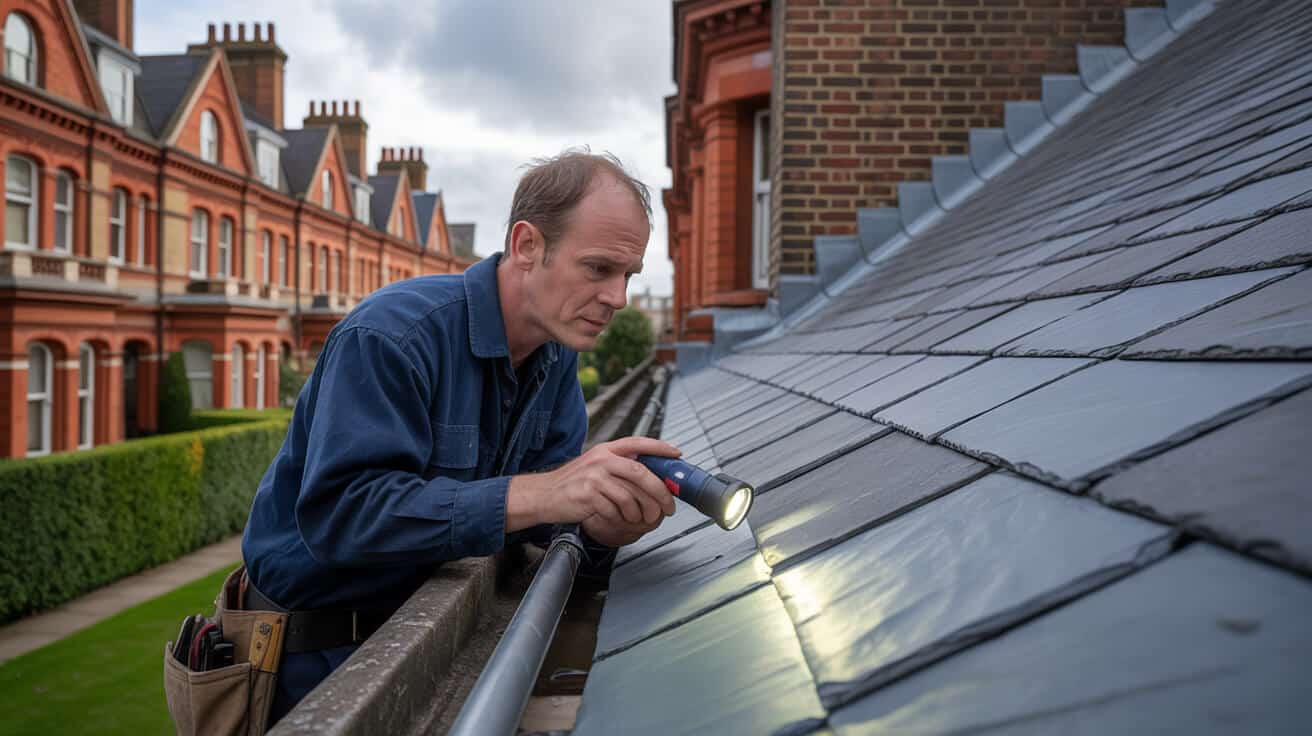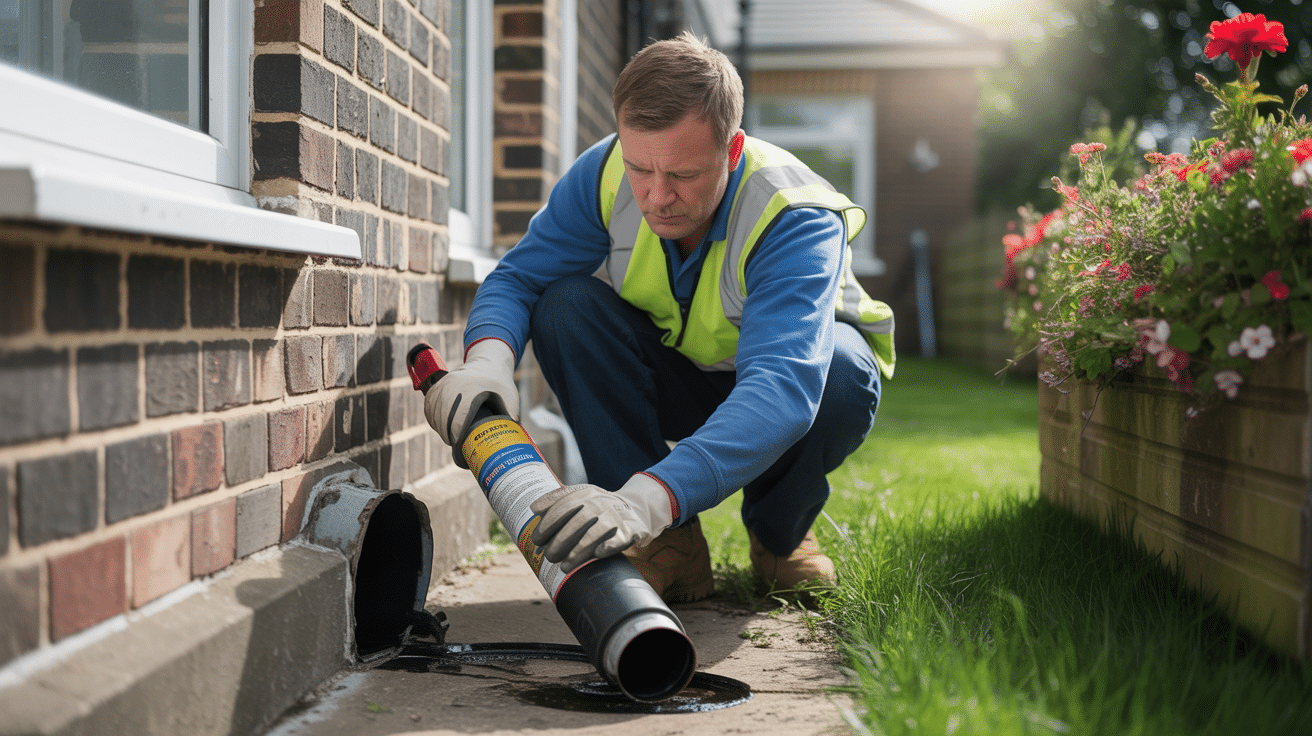 Inflation Proofing Your Maintenance Budget For 2026 And Beyond
Inflation Proofing Your Maintenance Budget For 2026 And Beyond

Why Are Maintenance Budgets Getting Squeezed So Hard by Inflation in 2026?
Every property owner, facilities manager, and asset leader faces the same sobering reality: inflation will not wait for your next annual review. The price you paid for last year’s repairs is old news—timber, metals, specialist labour, even compliance inspections have jumped faster than most budgets can adapt. If you’ve ever reviewed quarterly spend and wondered, “How did costs run away, again?” you’re not imagining things. Maintenance absorbs the brunt of inflation for one simple reason: it’s the most exposed, demand-driven budget line on your books.
Expenses don’t wait for you to catch up—future-proofing needs to become your team’s full-time obsession.
Let’s be real. “Making do” with last year’s numbers is a fast track to overruns and awkward boardroom conversations. Industry data shows that property maintenance costs in the UK surged by 10-18% over the last 18 months alone—outpacing rents, service charges, and almost every other controllable line item (blockchangere.com). What stings isn’t just the totals; it’s the volatility. One spike in copper, one burst pipe, or an urgent new fire safety regulation can throw your plans off course in a week.
When you build annual forecasts on guesswork, you’re at the mercy of market shocks—while others calibrate every move to stay under 5% variance. That’s the edge the top property leaders have. Not luck—system. Not a clever spreadsheet—discipline, prevention, and partnerships that turn chaos into clarity.
What’s Changing the Rules for 2026?
- Material costs are unpredictable.: Timber, steel, insulation—wild swings in commodity markets drive prices up without warning.
- Labour shortages cost extra.: Experienced technicians and specialist trades (especially HVAC and electric) can charge above inflation and are snapped up fast.
- Compliance is raising the stakes.: New HSE and fire safety directives mean more frequent inspections, more paperwork, and bigger penalties for lags or mistakes.
- Deferred repairs snowball.: Small leaks or cracks ignored this quarter become headline failures and major capital spikes within 12–24 months.
Inflation isn’t an excuse—it’s a signal. Waiting for “normality” is the most expensive move you can make.
Can Maintenance Actually Be Inflation-Proofed, or Is That Just Wishful Thinking?

It’s not wishful thinking—it’s process. While it’s easy to throw hands up and say “That’s just the market,” the outliers prove otherwise. Some property teams in the UK have kept budget variance below 5% across four years that battered the industry average (Bluestone Properties). Their secret? Preventive maintenance, constant data feedback, and contracts built for accountability.
You can take back control of your costs—if you systems-build instead of firefight.
Here’s the pivot: shift from reactive fixes to proactive cycles. It’s not about running endless checks for the sake of it. Smart scheduling targets your biggest risk clusters—plumbing, electrics, weather seals, asset controls—and logs every correction. This isn’t just theory; it cuts average reactive spend by up to 35% while increasing tenant satisfaction, asset value, and reputational standing (buildium.com).
Core Moves for Inflation-Proof Maintenance
- Routine inspections: Structure EICR, gas safety, and fire protection checks on set cycles, not just emergencies.
- Digital tracking: Log each fix and inspection—patterns will surface to drive smarter spending.
- Trusted partnerships: Consistent providers flag hidden risks early. One unified team beats a patchwork of callouts every time.
Those who treat maintenance as a performance system—not an afterthought—win every inflation spike and keep assets alive. Your reputation—and your tenants’ trust—is built on what fails to go wrong.
What’s Draining Budgets the Fastest—And Where Are the Biggest Savings Hiding?

Budgets don’t get blown by headline events—they’re eroded by a thousand preventable micro-failures. Avoiding that is about knowing where inflation bites hardest and where returns come fastest. Here’s the actual breakdown from 2026 projections:
| Pressure Point | Typical Inflation Risk | Quick-Action Buffer |
|---|---|---|
| Replacement Materials | 10–18% above CPI | Pre-buy critical spares; monitor trends |
| Specialist Labour | +4% above general wage | Batch work, schedule off-peak |
| Compliance and Inspections | Highly variable | Digital logs, combine inspections |
| Emergency Callouts | Can spike 2–3x standard rate | Preventive tasks, real-time sensors |
Action that blunts the impact:
- Bundle inspections.: Run fire, gas, and electrical checks with the same provider and on the same dates—minimises call fees, reduces calendar drift, and streamlines compliance.
- Digitise every log.: Paper checklists mean missed patterns. Digital records help spot repeat faults and controller lagging assets.
- Invest in strong supplier relationships.: Loyalty matters when material scarcity hits—secure priority pricing and service continuity when others are left chasing callbacks.
The fastest path to lower costs? Kill surprises before they surface.
A strong system sees and prevents the death by a thousand cuts.
How Do Prevention and Proactive Upgrades Outperform Chasing Problems and Cutting Costs?

Prevention isn’t about spending more; it’s about spending smarter. Portfolio leaders treating proactive maintenance and upgrades as an investment—not an expense—outperform the fix-on-failure approach every time. Consider energy inflation: smart LED, water-saving, and control investments aren’t just a “green add-on”—they can trim utility costs by up to 85% on key line items (hrfraternity.com).
Every pound you invest today protects ten pounds tomorrow.
But the real flex isn’t just in savings—it’s in the compounding effect: fewer tenant complaints, lower emergency callouts, and higher asset ratings attract (and retain) better occupants.
Fastest ROI Upgrades in 2026
- LED full-property retrofit: 60–85% reduction in lighting costs, recouped in under 2 years.
- Smart HVAC controls: 20–30% lower heating/cooling spend, plus better air quality.
- Passive insulation improvements: 15–25% annual savings, minimal disruption.
- Water-saving tech: 8–15% drop in consumption; crucial as water costs outpace CPI.
Don’t buy the storey that “now isn’t the time for upgrades.” The longer you wait, the more inflation punishes your baseline.
What Are the No-Regret Digital Tools for Keeping Maintenance Costs in Check?

Inflation multiplies risk in every hidden corner you don’t monitor. That’s where digital tools reset the odds. IoT sensors, live dashboards, and predictive analytics aren’t about fancy tech—they’re your edge against cost escalation and missed failures.
If you can’t see it, you can’t control it. And if you can’t control it, inflation wins.
UK asset leaders are deploying:
- Smart sensors: Detect leaks, overheating, motion, and trip hazards before an incident occurs.
- Digital checklists: End the paper shuffle and set up recurring, time-stamped logs for every service.
- Condition monitoring: Predicts asset fatigue and helps schedule pre-emptive fixes.
- Cloud-based incident logging: Data isn’t just for the next repair—it’s the evidence that defends your next budget and insurance negotiation.
For 2026 and beyond, any portfolio not running live digital tracking will see 10-18% higher average spend—regardless of effort elsewhere (Checkatrade). This isn’t a tech trend; it’s survival logic.
Should You Lock in Costs or Stay Flexible? The Real Role of Contracts and Providers

The ultimate inflation hack? Predictability. The best contracts provide it by replacing per-hour ambiguity with service-led, fixed-price logic. Your board (and you) deserve certainty. Here’s how it looks in action:
- Asset survey before signing.: Great contracts start with a full audit—not a sales pitch—mapping every likely failure and exclusion.
- Transparent bundles.: The best providers build compliance, routine visits, and repairs into one fee—no surprise invoices.
- Review cycles.: Yearly (or faster) contract reviews with links to market indices let you adapt terms before inflation eats through gains.
A fixed-fee service is not about rationing repairs—it’s about capping your risk, not your uptime.
Industry studies: portfolios using robust service contracts spend 10–20% less than those relying on separate callouts (hrfraternity.com).
Choosing the right partner takes you out of firefighting mode and keeps your head—and your budget—calm.
Where Does Compliance and Active Risk Management Save You Money (and Reputation) in an Inflation Storm?

Compliance isn’t a box-tick—it’s the silent force field that keeps regulators, insurers, and preventable costs in check. In inflationary times, a missed test, a paperwork lapse, or a silent safety breach can turn a manageable budget into a headline loss and an executive headache (ihmnotessite.net).
Compliance isn’t just legal—it’s your hidden cash reserve, locking down liability before it grows.
Your best moves:
- Centralise compliance documentation: with digital, real-time logs—never scramble for certificates when the heat is on.
- Anticipate hazards: Run annual risk logs, not reactive reviews. More than 1,000 UK landlords now use live compliance tracking to cut insurance surcharges—and they sleep better for it ([riooapp.com](https://riooapp.com/blog/the-impact-of-rising-inflation-on-property-management-strategies-for-cost-management?utm_source=openai)).
- Bring stakeholders along early: Share compliance wins with insurers and investors to strengthen bargaining power and head off penalty rates before renewal.
Treat every audit, inspection, and digital signoff as a cash-saving event, not a compliance cost.
What Actually Sets All Services 4U Apart in Future-Proofing Your Maintenance Budget?

It’s easy to call yourself a “partner.” All Services 4U lives it in everyday operations. Here’s what flips the experience from vendor to co-pilot—for real:
- Proven results: Clients experience less than 5% annual spend variance while others in the same postcode double that yearly. This is system, not accident ([Checkatrade](https://www.checkatrade.com/blog/expert-advice/property-maintenance-costs-landlords/?utm_source=openai)).
- Integrated compliance and data: Every maintenance visit is logged, uploaded, and cross-checked—not just to cover backs but to build a living asset record you own.
- Transparent, no-surprise contracts: Predictable, bundled pricing. You choose the scope; the bill never escalates in the shadows.
- End-to-end expertise: Certified engineers bring prevention, regulatory, and repair up to spec—no trade overlap, no uncertain callouts, and no compliance blind spots.
- Client-first reporting: You see asset status, spend, and risk profiles in real-time, not “once in a blue moon.”
You don’t rise above inflation alone—your provider either raises your performance or drags it down.
A relationship with All Services 4U is a shield built from data, trust, and proven action. When the market moves, you move first.
Take Decisive Control—Don’t Let Inflation Dictate Your Next 12 Months
Here’s the truth: everyone faces inflation, but some sleep easier. They don’t wait for the headlines to decide their margins; they move first, and move with partners who turn risk into ROI.
All Services 4U gives you that first-mover advantage—free, zero-obligation asset resilience consultation, stepwise action plan, and a proven maintenance contract. The market will keep changing, but decisive action puts your portfolio ahead of the next shock.
Plan like a leader—act before inflation makes you another cautionary tale.
Over 1,000 UK property assets are already insulated with proactive, data-backed maintenance management. The difference is never luck—it’s system, partnership, and actions taken before the rest. Bring All Services 4U onto your side, protect your hard-won assets, and make 2026 the year your maintenance budget finally works for you.
Frequently Asked Questions
How does a property owner future-proof maintenance budgets against the squeeze of 2026+ UK inflation?
building maintenance budgets that outlast inflation is all about stacking control systems before costs surge—not scrambling when it’s too late. The property leaders thriving now aren’t those penny-pinching line items, but those systemising multi-trade inspections, locking in price certainty, and pre-emptively slashing surprises before they turn into all-out emergencies.
Layer in quarterly, cross-trade inspections and you can realistically expect to avoid up to 35% of the repair costs typical for last-minute fixes—industry research on UK managed portfolios backs this up. The real edge? Turning routine service visits into predictive health checks, not just quick-fixes, so minor items like failing seals or under-performing boilers get resolved before they rip through your budget.
Smart operators also pair these checks with fixed-fee maintenance contracts. These arrangements cap risk—typically cutting year-on-year spend volatility by 10–15%, regardless of raw material inflation (according to benchmarking data compiled in recent FM market reviews). Factor energy upgrades like LEDs or IoT controls into your cycle and you can layer in up to 25–85% operational savings on top of the fixed-price baseline.
“Predictable budgets are built by those who act before volatility, not after it’s in the headlines.”
What does true inflation defence look like in daily practice?
- Forward-schedule quarterly property checks; don’t rely on reactive “something went wrong” callouts
- Invest in bulk procurement—secure high-usage parts at stable prices before supplier increases land
- Analyse insurance claims history: use trends to renegotiate premiums and direct preventive focus
- Partner with multi-trade providers who can flex across disciplines, so rising costs in one area don’t upend the entire plan
Properties managed with this level of precision avoid the hidden tax of panic spend, preserve value, and set themselves up for repeatable, boardroom-level performance. When you want to future-proof your property, All Services 4U builds inflation shields into every maintenance programme—no luck, just process.
What are the most reliable models for forecasting maintenance costs as inflation accelerates in the UK?
It’s not enough to bump last year’s budget number by “a bit” anymore—reliable property maintenance forecasting means bringing together historical data, live asset intelligence, and inflation tracking in quarterly cycles. That’s how the sharpest facilities managers put out cost fires before they start.
Begin by collecting 3–5 years of segmented expenditure—planned versus reactive maintenance, compliance activities, and system upgrades. This allows you to recognise chronic overspending “hotspots” such as repeated drainage overflows or recurring HVAC spikes. Property benchmarking studies confirm: portfolios using granular breakdowns instead of all-in-one buckets consistently report more accurate predictions (often within 5–7% of actuals).
Overlay this with up-to-date CPI projections—like the Bank of England’s current trend above 4%—and test how your actual spend would fare at 2x and 3x volatility. Quarterly recalibration is vital: portfolios that refresh projections every four months avoid as much as 40% of surprise overages compared to those reviewing once a year.
“Data is only useful if it’s live, granular, and ready for action—not just locked in last year’s files.”
Core steps for inflation-adjusted projection:
- Aggregate spend and break down categories by failure mode, urgency, and asset type
- Integrate inflation and supplier indices directly (not generic “uplifts”) into each cost line
- Automate live asset monitoring with IoT tools for usage and wear pattern feedback
- Simulate best- and worst-case scenarios to stress-test contract structures and reserve funds
Companies like All Services 4U calibrate each customer’s forecast quarterly against real market data—streamlining risk, eliminating budgeting hope, and keeping cost control in your hands.
When is it most advantageous to lock in a fixed-price maintenance contract for inflation control?
Committing to a fixed-price maintenance contract can be the single biggest lever for controlling runaway costs as inflation bites, but only when structured with full transparency and aligned to your asset realities. These contracts work best for portfolios with predictable lifecycles—think large blocks, recurring communal systems—or where surprise costs could tank your reputation or regulatory score.
Robust fixed-rate agreements draw the line at routine, clearly-defined works (annual gas checks, lift inspections, fire alarm servicing) and expressly exclude out-of-scope or high-ticket emergencies. The real value? As markets swing, your spend doesn’t—you keep labour and materials pegged to a pre-set rate, bypassing sudden supplier hikes, provided escalation clauses are tied to independent indices like the CPI, not vendor drag.
Some All Services 4U clients now negotiate shared savings rewards as part of their fixed-price deal: the contractor profits by beating the agreed threshold and sharing a portion of those savings with property owners if unplanned events come in lower than the risk model.
“Fixed-fee contracts transform inflation into just another number—and turn uncertainty into leverage.”
How do you spot a truly strategic fixed price contract?
- Full, written breakdown of what’s included and not—no “grey zones”
- Escalation clauses are matched to published indices, not supplier whim
- Built-in break points for annual renegotiation if market volatility exceeds agreed triggers
- Compliance, insurance, and statutory maintenance are locked in at the base rate, while major works remain transparently quoted
Contracts built on these foundations do more than steady costs; they sharpen supplier accountability and encourage data-driven management. The right partner, like All Services 4U, tailors every fixed-fee to your asset reality.
Which strategy stack provides the highest protection against inflation in property maintenance portfolios?
The only way to defeat cost creep is to stack mutually reinforcing actions, so if one line bends, the others catch. Every maintenance leader who weathered inflation stresses in the last five years did so by knitting operational, technological, and contractual safeguards into a single playbook.
Prevention towers above reaction: quarterly multi-discipline inspections catch issues—like roofing membrane shrinkage or rising humidity—3–4x cheaper than reactive repairs. Digital asset logs cut phone-tag and paperwork, delivering evidence for insurance or regulatory audits within hours, not days. Energy and compliance savings stack on top: portfolios that combine annual energy upgrades, preventive compliance, and digital monitoring report cost volatilities under 7%, while those without see 18–22% swings.
| Stack Element | Savings/Efficiency Gain | Refresh Cycle |
|---|---|---|
| Quarterly Inspections | Up to –35% on emergencies | Quarterly |
| IoT Asset Monitoring | Up to –18% on spend | Ongoing |
| Energy/LED Upgrades | 20–85% OPEX cut | Annual |
| Fixed/Hybrid Contracts | 10–15% hedge vs PAYG | Annually |
| Bulk Procurement | 10–22% on parts/materials | Biannual |
| Active Compliance Logging | Smoother audits/insurance | Quarterly |
“Control is earned by stacking small upgrades and reviews until chaos has nowhere to hide.”
Systems like All Services 4U’s layer these elements—quarterly checks, vetted hybrid deals, energy upgrades, and cloud logging—so your portfolio is never one broken pump or missed inspection away from chaos.
How does embracing technology and automation keep maintenance spend steady as prices shift?
Tech-driven property owners treat digital tools not as “nice to haves,” but as critical insurance policies. Installing smart moisture sensors in riser cupboards, cloud-based asset logs for HVAC and fire systems, and automated compliance reminders means surprises plummet—UK property statistics show 10–18% less unplanned spend within a year of full instrumenting.
Predictive analytics software can forecast system wear or cyclical pressure surges, so you time callouts to need, not tradition or guesswork. Maintenance teams then shift from firefighting to high-value diagnostics, engaging only when intervention makes sense. This approach pulls compliance, insurance terms, and operating cost into one manageable stream, slashing admin and boosting audit speed—critical when every pound counts.
All Services 4U operationalises these tools by default. That means live, sensor-fed asset data, instant photo/audio logging, and digital service diaries—all tied to your property’s compliance and budget profile.
“Smart maintenance isn’t about tracking everything—it’s about making sure nothing goes wrong unwatched.”
Key takeaways for technical resilience:
- Link compliance logs, maintenance cycles, and live asset data for a full-spectrum shield
- Use photo and PDF evidence to fulfil insurer, tenant, and auditor requests instantly
- Automate reminders: missed checks cost more than any tech spend
Investing in digital-first management is now the minimum standard for cost control as inflation lurches. Smart systems turn guesswork into precision and routine stress into sustainable calm.
Why is robust compliance and risk management your strongest defence against inflation-driven cost explosions?
When prices spike and margins thin, the smallest lapses in compliance become outsized liabilities—invalidated insurance, regulatory fines, or “uninsurable” damages are never factored into simple OPEX planning, yet they can swamp a budget overnight. Compliance routines aren’t admin; they’re stealth risk shunts for your bottom line.
Recent insurance studies of over 1,000 UK portfolios show digitising risk records and compliance routines led to up to 12% savings on premiums—and faster approvals for claims or renewal. Every routine check (EICR, fire safety, gas safety) builds “defensive documentation,” stopping single-incident disasters from cascading through your finances.
For site teams and facility heads, All Services 4U hardwires structured compliance reviews and risk logs into your regular service cycle, delivering clean audit trails and live checklists that survive the churn of staff changes or management hand-overs.
“In volatile times, your best friend isn’t luck or legacy—it’s bulletproof records and airtight compliance routines.”
Risk layers that keep budgets healthy:
- Schedule recurring digital risk and compliance audits before deadlines, not after
- Centralise all logs and checklists to eliminate “lost paperwork” or manual error
- Hardwire risk/maintenance workflows with supplier insurance caps and compliance documentation
By embedding compliance into every operational phase, you lock in budget discipline—even as external costs shift—making your property a safe bet for underwriters, regulators, and stakeholders. Partner with All Services 4U to transform your compliance process from reactive afterthought to active inflation-buster.



